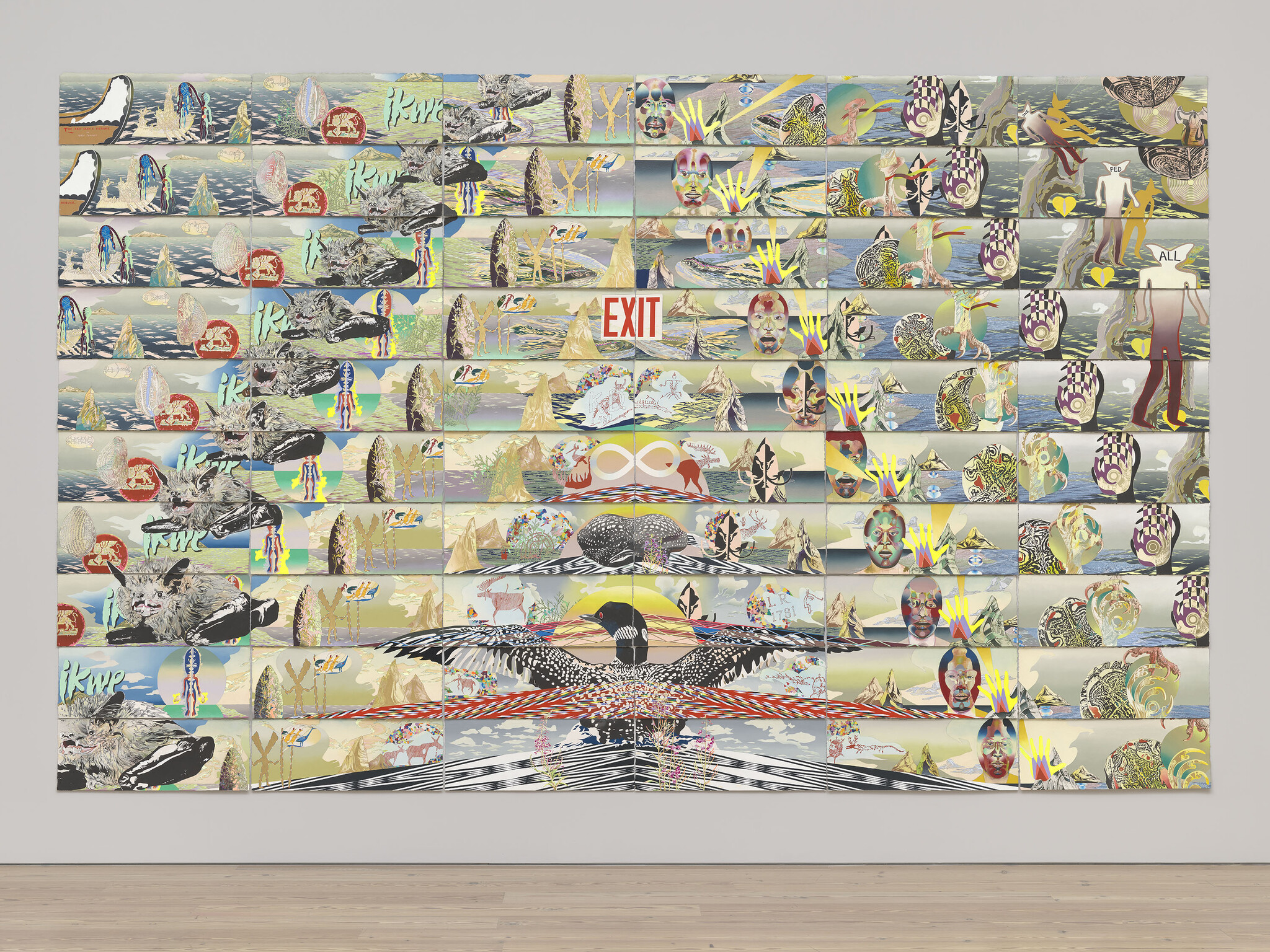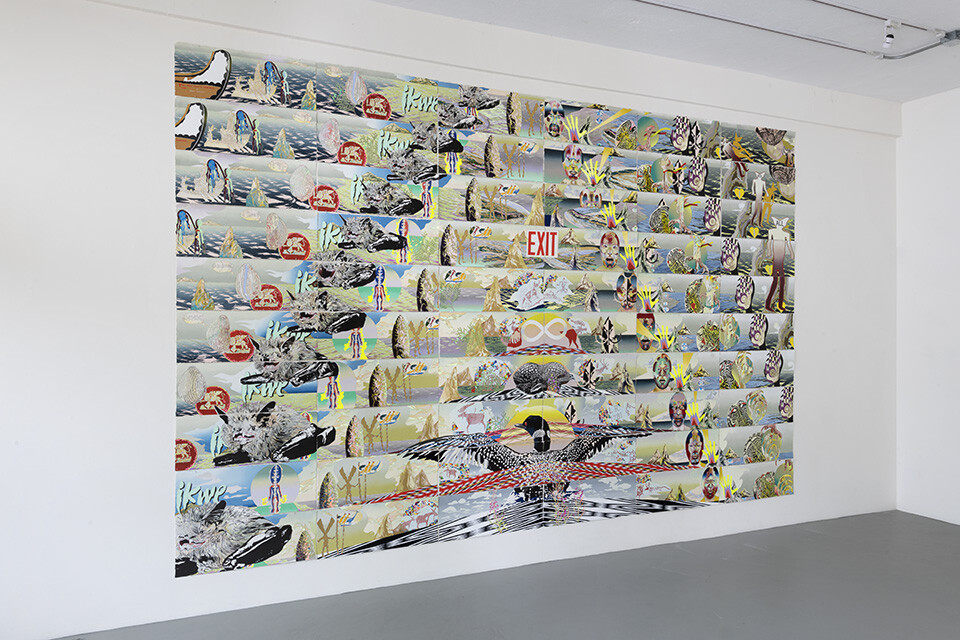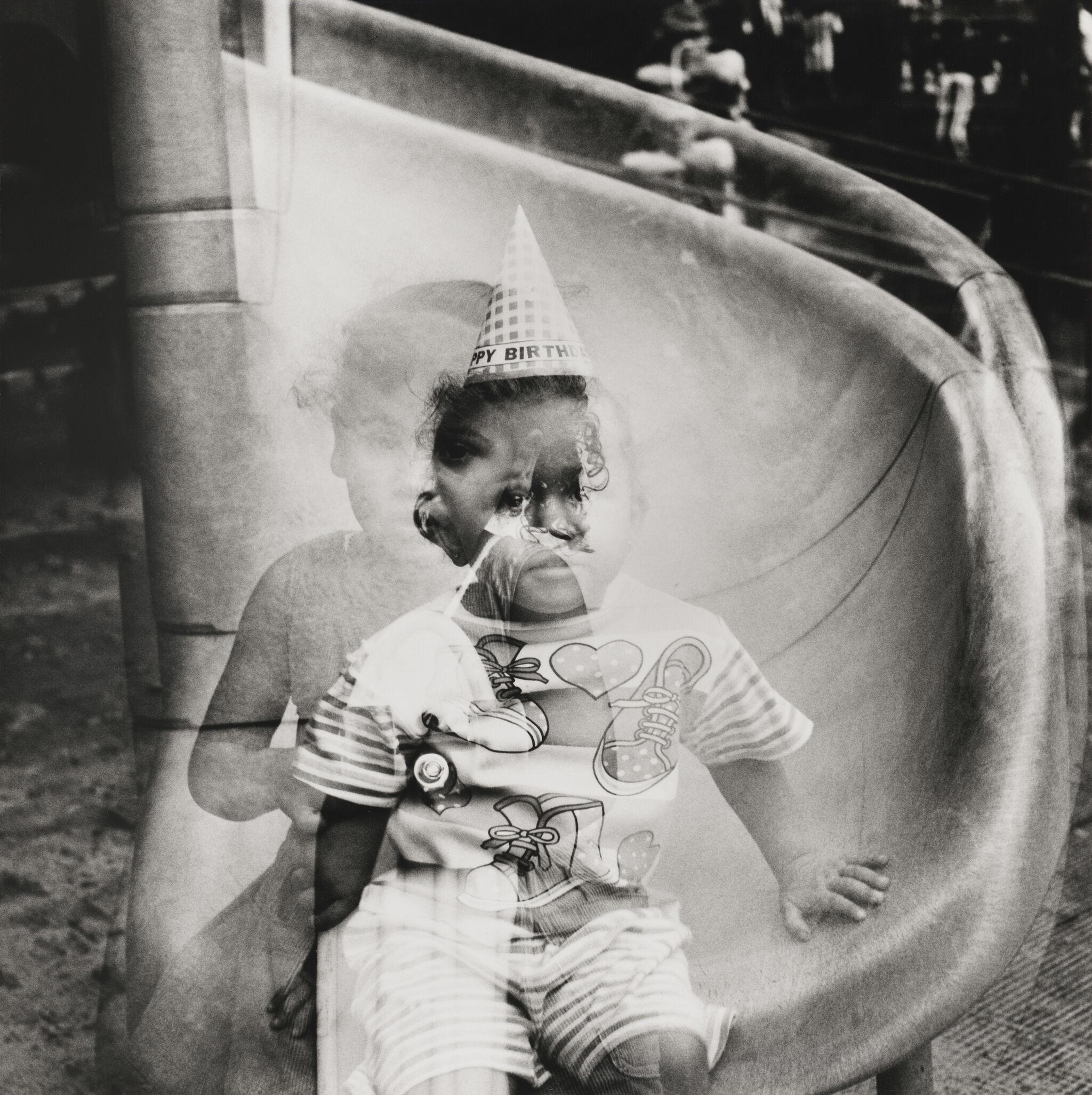Not on view
Date
2020
Classification
Drawings
Medium
Oil, watercolor, opaque watercolor, ink, acrylic, colored pencil, ball-point pen, fiber-tipped pen, and graphite on paper, 60 parts
Dimensions
Overall (In-situ): 115 × 183 in. (292.1 × 464.8 cm)
See components
Accession number
2021.22a-f
Credit line
Purchase, with funds from the Drawing and Print Committee
Rights and reproductions
© Andrea Carlson
Audio
-
Andrea Carlson, Red Exit, 2020
In Inheritance (Spanish)
0:00
Andrea Carlson, Red Exit, 2020
0:00
Andrea Carlson: Me llamo Andrea Carlson y soy una artista de Chicago, Illinois y de Grand Marais, Minnesota.
Narrator: Carlson habla sobre su obra, Red Exit.
Andrea Carlson: En el centro, se puede ver este colimbo imposible de pasar por alto. Y luego recordaba una historia en el pueblo ojibwe sobre el fin del mundo: una historia sobre una inundación en la que distintos animales, buceadores terrestres, se embarcan en la búsqueda de tierra para reconstruir el mundo. Y todos fallan la misión, excepto la musaraña, pero el colimbo es uno de los buceadores que intenta recuperar un pedazo de tierra. Y yo lo coloqué a él en el centro; puse en foco estos intentos de sobrevivir. Además pienso: “¿Según las condiciones de quién?” El título general de Red Exit es sobre supervivencia, sobre superar una dificultad.
Trabajo comúnmente con papel para acuarela Arches de 850 g, un papel pesado. Uso este papel porque puedo pintar con óleo, tinta, gouache, bolígrafo, todos materiales muy distintos en una misma superficie.
Y mi estilo de trabajo es muy celular porque quiero lograr una cualidad fílmica en mis obras, algo que parezca salido de una cámara de video, una película analógica.
A veces cuando recorre la página con la mirada y observa imagen tras imagen, puede ver que no son del todo idénticas, y quería que pareciera una obra animada, o que cada instante de un objeto se vea diferente.
El título en sí, Red Exit, proviene de un poema de Gordon Henry, un poeta ojibwe. Hizo una lista de todos estos términos que no deberían utilizarse en la literatura indoamericana. Es un poema un poco humorístico, pero también habla en serio. Y en esta lista incluyó el término “red exit” (“salida roja” en español), y pensaba que si bien no es un término aceptable en la literatura indoamericana en tono de broma, existen estos carteles de salida de color rojo que vemos arriba de las puertas, y existen casos de los que nos negamos a ser parte o en los que nuestra voluntad es una táctica de supervivencia. Existen espacios que podemos reservar para nuestra existencia, que hay lugares que no son para todos, y que la no participación es una táctica fundamental en algunos de estos espacios problemáticos.
-
0:00
Andrea Carlson, Red Exit, 2020
0:00
Andrea Carlson: My name is Andrea Carlson and I am an artist who is from Chicago, Illinois, and Grand Marais, Minnesota.
Narrator: Carlson describes her work, Red Exit.
Andrea Carlson: At the center is this hard-to-miss loon. And I was thinking of, in the Ojibwe, we have an end-of-the-world story, this flood story where these various animals, these earth divers go to retrieve a bit of earth in order to remake the world on. And all of these animals fail and the muskrat succeeds, but the loon is one of the earth divers that makes an attempt to bring back a piece of the earth. And I put that at the center, these attempts to survive. And then, on whose terms? So the general title of Red Exit is about survival, getting through something very difficult.
I typically work on 400 pound Arches paper, the really heavy watercolor paper. And I use that because I can put oil, I can put ink, I can put gouache, I put pen and all of these different materials on a single surface.
And I work in this very cellular way because I want it to feel like there's a filmic quality almost right out of a movie camera, analog film.
Sometimes when you look from image to image across the page, you can see that they're not quite the same, and I wanted it to feel almost animated, or that any instant of an object is going to look differently.
The title itself, Red Exit, comes from a poem by Gordon Henry, who's an Ojibwe poet. He had made this list of all of these terms that should not be used in American Indian lit. It's kind of a tongue-in-cheek poem, but some of it is very serious. And in this list, he had “red exit” and I decided that maybe if it's not okay for Native lit in a jokey type of way, I was thinking of the idea of there's red exit signs that we see over every door and this idea of refusal to participate or where our agency lies as a tactic for survival. That there's some spaces that we can reserve for ourselves, there are some places that aren't for everyone, and non-participation is an important tactic in some of these really problematic spaces.
Exhibitions
Installation photography
-
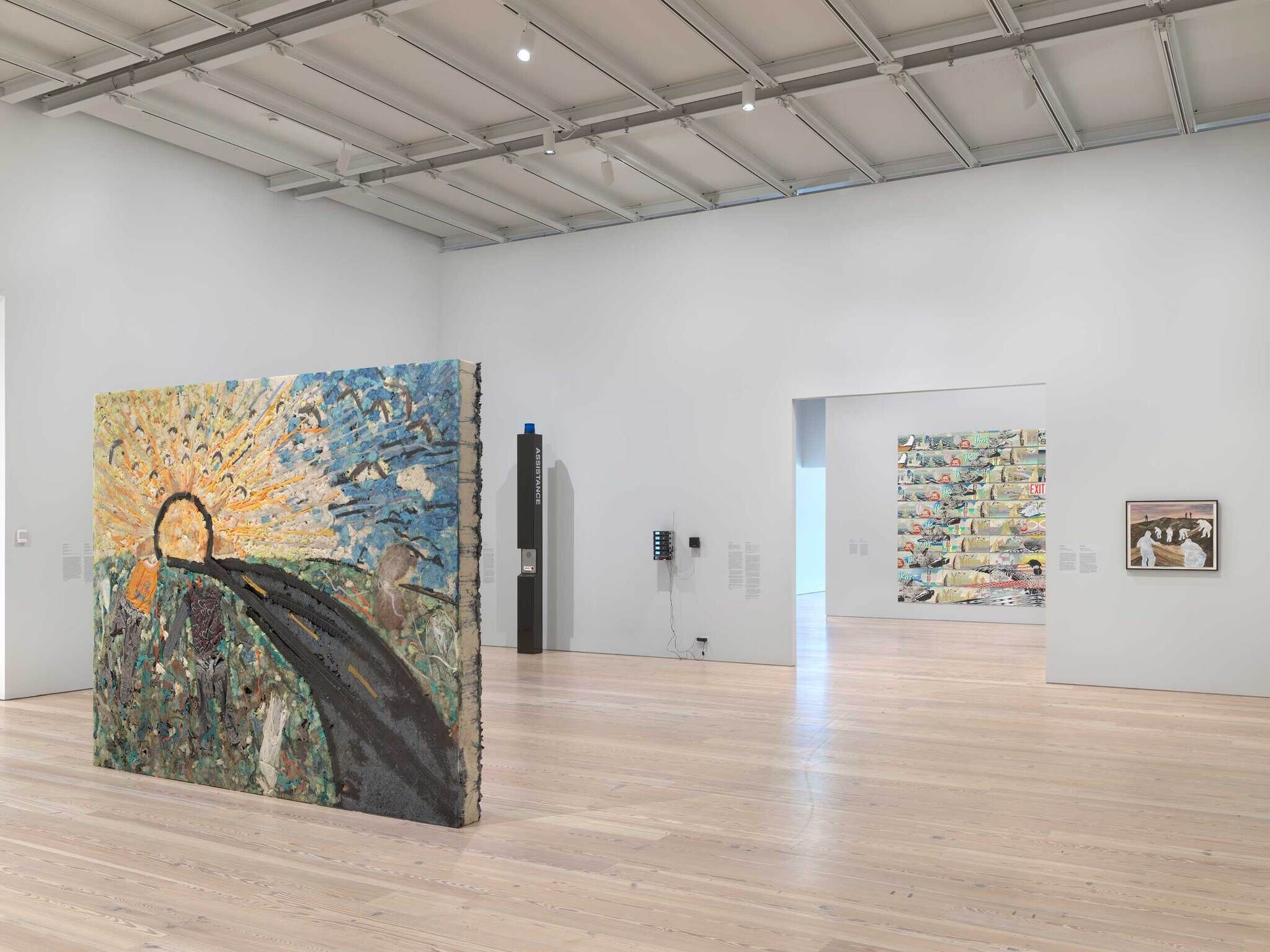

Installation view of Inheritance (Whitney Museum of American Art, New York, June 28, 2023—February, 2024). From left to right: Kevin Beasley, The Road, 2019; Cameron Rowland, Lynch Law in America, 2021; Cameron Rowland, Life and Property, 2021; Andrea Carlson, Red Exit, 2020; Kambui Olujimi, Hart Island Crew, 2020. Photograph by Ron Amstutz
From the exhibition Inheritance
-
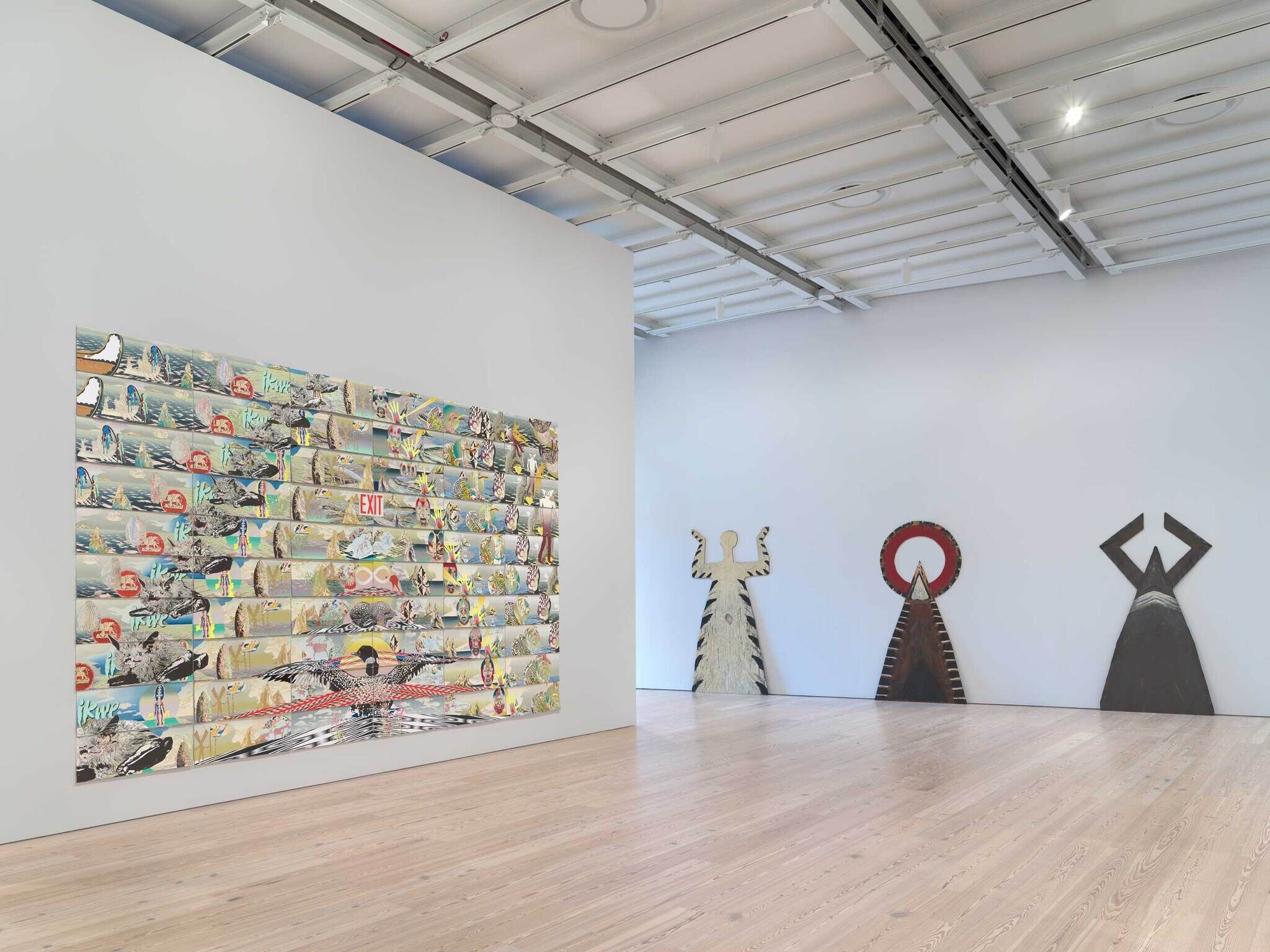

Installation view of Inheritance (Whitney Museum of American Art, New York, June 28, 2023—February, 2024.). From left to right: Andrea Carlson, Red Exit, 2020; Mary Beth Edelson, Shell Venus, 1974-75; Mary Beth Edelson, Red Sophia, 1974-75; Mary Beth Edelson, Louise, 1974-75. Photograph by Ron Amstutz
From the exhibition Inheritance
-
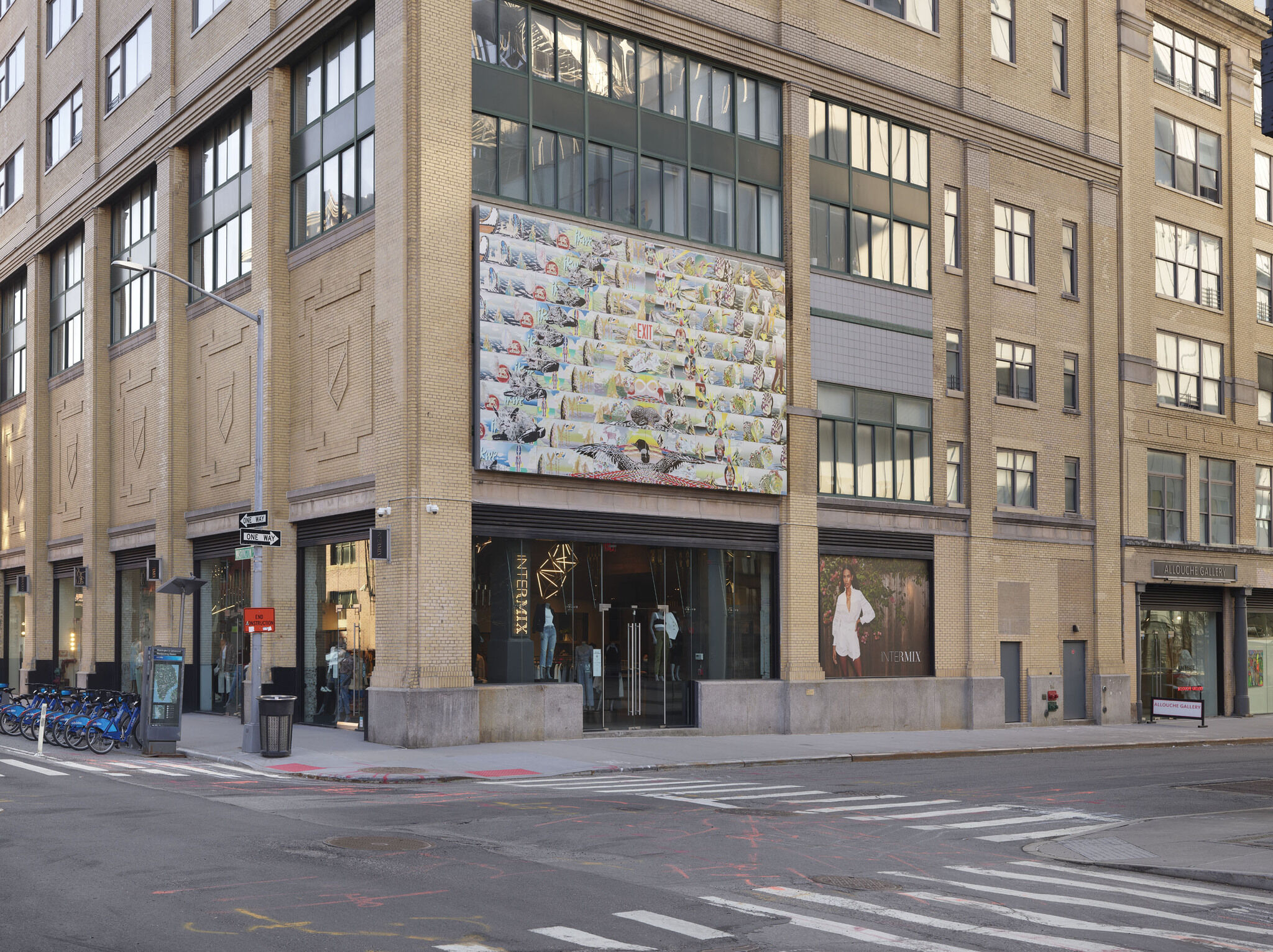

Installation view of Andrea Carlson: Red Exit (95 Horatio Street, Whitney Museum of American Art, New York, January 25, 2020-September 2021). Photograph by Ron Amstutz
From the exhibition Andrea Carlson:<br>Red Exit

